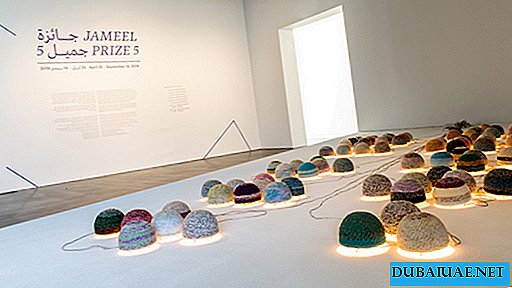 Swan Lake is the ingenious creation of the great Pyotr Ilyich Tchaikovsky and the most famous classical production in the world, which has become the hallmark of all Russian ballet and, above all, an integral part of the history of Russia itself.
Swan Lake is the ingenious creation of the great Pyotr Ilyich Tchaikovsky and the most famous classical production in the world, which has become the hallmark of all Russian ballet and, above all, an integral part of the history of Russia itself. The ballet overture, filled with real drama and emotional anxiety, is familiar even to those who did not have the happiness of seeing the performance on stage: it sounded from the screens in Soviet and foreign films more than once, and in 1991 it became a symbol of radical historical transformations and the change of political eras in our country. Today, Swan Lake is included in the repertoire of the leading classical theaters in the world, and with the leading role of the Odette, outstanding ballet dancers of our time begin to write their biographies, continuing and changing the traditions laid down by great primaries - Anna Pavlova, Matilda Kshesinskaya, Galina Ulanova and Maya Plisetskaya.
It makes no sense to retell in detail the history of the ballet, which hundreds of books have already been written about and dozens of films made. Let us recall only a few interesting facts and listen to some interesting opinions of those brilliant masters, thanks to whom the “symbol of the Russian ballet” was enriched with lively choreographic images, entered the golden fund of classical culture and continues to shine on the best theater stages around the world.
From Votkinsk pond to Hohenschwangau lake
 Despite the fact that this year the classical work of Pyotr Ilyich Tchaikovsky celebrated its 136th anniversary, the ballet historians still have no consensus on exactly which corner of the earth became the prototype of the lake with enchanted swans.
Despite the fact that this year the classical work of Pyotr Ilyich Tchaikovsky celebrated its 136th anniversary, the ballet historians still have no consensus on exactly which corner of the earth became the prototype of the lake with enchanted swans.
According to one version, the Bavarian lake inspired the great composer, stretching in the vicinity of the Hohenschwangau castle in the foothills of the Alps, on the other - the Votkinsk factory pond, near which the master lived in St. Petersburg, on the third - a lake in the Davydovs estate in Cherkasy region in Ukraine, on the shore whom he rested in those years, observing the graceful movements of snow-white birds.
No less mysteries are fraught with the very image of a swan girl, which can be found in European folklore and in Pushkin's Tale of Tsar Saltan. Knowing the truly Russian character of the character, with its Slavic melodiousness and captivating tenderness, one involuntarily inclines toward the third version, and the images of the formidable kite, the brave Tsarevich Gvidon and, in the climax, the triumph of good over evil and the debunking of evil charms with true love, come to mind.
The birth of Russian ballet
It should be noted that before Pyotr Tchaikovsky not one of the major composers took up writing music for ballet. “At the invitation of the Moscow Directorate, I’m writing music for the ballet Lake Swans. I took up this work partly for the money I need, partly because I had long wanted to try this kind of music,” wrote the 35-year-old writer to his friend Nikolai Rimsky-Korsakov.
The premiere took place on February 20, 1877 at the Bolshoi Theater in Moscow. This day is considered to be the birthday of Russian classical ballet, although it was not the brightest and most significant in its history. Simply put, the performance, directed by the Czech choreographer Vaclav Reisinger, failed: he was called the most treasured, boring and poor of those that were staged in Russia. In addition to the poor scenery themselves, Pelageya Karpakova was not impressed by the viewer, who became the first performer of the leading role: critics called her a "weakly mimicry" dancer. Pyotr Ilyich himself responded so much about the production: "Pure rubbish, I can’t remember it without a sense of shame"
The great composer died in 1893, and did not wait for the triumph of his creation on the big stage. And after his death, the score fell into the hands of the famous choreographers Marius Petipa and Lev Ivanov, who have a delicate musical taste and are able to perceive all the greatness of the master’s work.
The score was edited by Italian composer Riccardo Drigo, and the libretto was finalized by the genius composer's brother Modest Ilyich Tchaikovsky. The main role was to be performed by the ballerina of the St. Petersburg imperial troupe, Pierina Legnani. The result of the addition of all talents was the true birth of Swan Lake, which took place on January 15, 1895 on the stage of the St. Petersburg Mariinsky Theater. It was the performance of Petipa-Ivanov that became the classic version of the ballet, which provided the basis for creative research for all subsequent generations of choreographers. “Without Petipa, Drigo and Ivanov, this ballet would not have conquered the whole world,” critics wrote. They revived Tchaikovsky’s forgotten ballet, gave him a new life, taking into account all the changes that took place both in life and in art.
Among the followers of the omnipotent maestro, it would not be out of place to mention the greatest ballet teacher Agrippina Vaganova (premiered on April 13, 1933 at the Mariinsky Theater, prima Galina Ulanova performed as an outstanding dancer and choreographer Rudolf Nuriev (premiered in 1946 at the Vienna Opera ) and the modern master Yuri Grigorovich (in the first edition, the ballet was shown in 1969 at the Bolshoi Theater in Moscow).
Odette and Odile
Everyone knows that the main character of the play is the beautiful princess Odette, turned into a swan by an evil genius. This party can only be performed by a prima ballerina, who has a purity of lines and an elevated image. Her double Odile - the daughter of an evil genius - appears on stage in the second act as a black swan, pretending to be Odette, and tries to seduce the main character of the play - Prince Siegfried.
As a rule, the same ballerina becomes the performer of both of these roles, and, as another rule, each of them dreams of dancing the “Queen of Swans” from childhood.
Great prima - about Swan Lake: Anna Pavlova
The main Russian swan and icon of classical ballet is rightly called the soloist of the Mariinsky Theater Anna Pavlova, who won unprecedented fame and recognition at the turn of the XIX-XX centuries. Recalling her first foreign tour with the theater troupe in 1908, she wrote: “Everywhere our tour was welcomed as revelations of new art. Many imagine the dancer's life frivolous. I went with the Russian ballet troupe to Leipzig, Prague and Vienna, we danced the lovely Swan Lake by Tchaikovsky. Then I joined the troupe of Diaghilev, who introduced Paris to Russian art
The whole life of the great Russian ballerina was subordinated to the image of a swan, without which her stage reincarnations were unthinkable to the public. Even in the last minutes of her life, Anna Pavlova pressed a swan costume to her, not losing hope once again to go on stage in it.
Galina Ulanova
The “Golden” pages in the history of “Swan Lake” were also inscribed by the famous Soviet ballerina Galina Ulanova, who also shone on the stage of the Mariinsky (and at that time - Kirovsky) theater, in the troupe of which she was from 1928 to 1944.
Odette-Odile became for her the first leading party: she performed it at 19 years old. "Gradually listening to the music, I found some new dance nuances.
My desire was born not just to perform this or that variation in a good and clean way, but to convey in dance, in movements, in poses my mood caused by the music and the content of the ballet, ”the legendary prima spoke of her creative searches.
Maya Plisetskaya
The main ballet Swan Lake was also for the inimitable Maya Plisetskaya, who showed the viewer the flawless performance of all the elements that make up the art of classical dance. In the book of his own memoirs, the great prima mentions:
"... I guess I was dancing Swan Lake imperfectly. There were successful performances, there were flaws. But my style, principles, some theatrical innovations took root, took hold." Plisetskiy style, I can say, went around the world. From the stage, from the TV screen no, no and I see my refracted reflection - drooping hands, swan elbows, head thrown back, body thrown back, optimality of fixed poses. I rejoice at this. I'm sad ... "
 Svetlana Zakharova
Svetlana Zakharova
The new symbol of the big ballet and one of the most expressive actresses of our time, Svetlana Zakharova, calls Swan Lake the best performance of all that has ever existed in history: "It is believed that I am a classical ballerina, and the classic is Petipa. Probably, they think so for good reason I’m sure I can feel him, and I’m good at his performances ... It all depends on the soloist, how he takes on the part, his performances are very suitable for me, and I feel very comfortable and cozy, especially if I dance the part repeatedly already run around several . Then again ko just bask in the dance "Swan Lake." - better than this performance.
Ulyana Lopatkina
The primus of the Mariinsky Theater is called the “most tender swan”. In no image can one find so much grace, sensuality and plasticity. The aesthetic catharsis, when you see Ulyana Lopatkina on stage, reaches its climax, and the viewer can no longer hold back tears. In one of her interviews, the ballerina noted: “Everyone knows Swan Lake, but I constantly encounter bewilderment, admiration, interest in how I interpret well-known parts. For example, no one has ever imagined showing the evil of Odile through mystery, sophistication and addictive , the mystical charm of the image - without concrete, stabbing, harsh manifestations. I am an emotional person, and temperamental parties attract me more than lyrical and romantic ones - it’s more likely to go into the depth of the image. Kindness is always more difficult to dance, than something bright. It's like in life: we always turn our heads when someone behaves out of the ordinary, when a woman is dressed defiantly and breaks the boundaries of generally accepted behavior. The same is true in the classics: Odile is easier to dance - this is facilitated by the motion graphics, his aggressive plastic, black suits. The white swan is a dance of hands, purity, simplicity, sincerity. "










